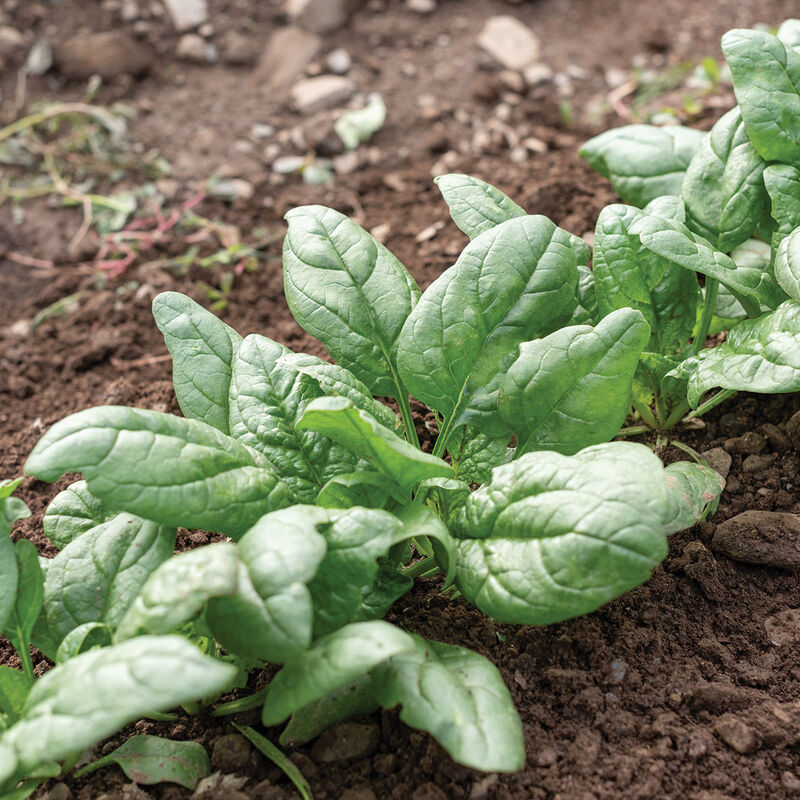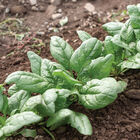Tundra Organic (F1) Spinach Seed
Product ID:3583G.113583G
Tundra Organic (F1) Spinach Seed
Product ID:3583G.113583G
Organic, semi-savoy variety for spring and fall.
Glossy dark green, elongated-oval leaves. Upright growth habit. Slower growth makes it ideal for early spring through early summer planting, as well as early fall. USDA Certified Organic.Disease Resistance:
Specs:
- This product does not ship to the following countries: United Arab Emirates, Austria, Australia, Barbados, Belgium, Bulgaria, Bermuda, Bahamas, Switzerland, Cyprus, Czech Republic, Germany, Denmark, Estonia, Spain, Finland, France, United Kingdom, Greece, Hong Kong, Croatia, Hungary, Ireland, Iceland, Italy, Japan, Republic of Korea, Kuwait, Cayman Islands, Lithuania, Luxembourg, Latvia, Malta, Netherlands, Norway, New Zealand, Oman, Poland, Portugal, Qatar, Romania, Saudi Arabia, Sweden, Singapore, Slovenia, Slovakia, San Marino, Thailand, Trinidad and Tobago, Taiwan, Ukraine.
SCIENTIFIC NAME:
Spinacia oleraceaCULTURE:
Spinach grows in a wide range of soils if moist and fertile but is sensitive to acidity; pH should be at least 6.0, preferably 6.5–7.5. Spinach germinates best in cool soil. Begin sowing in early spring as soon as the ground can be worked. Summer sowing in soil over 85°F (30°C) risks low or erratic germination. If sowing must be done during warmer weather, irrigating can help cool the soil and improve germination. Sow in mid-to-late summer for a fall harvest. Spinach can also be planted from late summer through the winter in protected structures for fall, winter, and spring harvest, though growth rates are much slower. Using floating row covers offers additional winter protection.DAYS TO MATURITY: From date of direct seeding. TRANSPLANTING: While direct seeding is customary, some growers choose to transplant their spinach, especially using the Paperpot Transplanter. Transplanting can help ensure full stands if germination has been difficult, either because of warm soil temperatures or diseases like damping off.DIRECT SEEDING:
For baby leaf: Sow 3–5 seeds/inch in rows at least 2" apart. For bunching and full size: Sow 10 seeds/ft., 1/2" deep, in rows 12–18" apart.AVG. DIRECT SEEDING RATE:
For baby leaf: 1M/25', 5M/125', 1,200M/acre at 40 seeds/ft. in rows at least 2" apart. For full-size leaves: 10M/1,000', 290M/acre at 10 seeds/ft. in rows 12–18" apart.SUCCESSION PLANTING:
For a continuous supply, sow every 7–10 days.HARVEST:
For baby leaf: Harvest when leaves reach desired size in 3–5 weeks, depending on time of year and speed of growth, making sure to cut above the basal plate for cut-and-come-again harvests. A second cut is possible by choosing appropriate varieties in all the seasonal slots. Triple-rinse leaves, sort out cut and broken leaves, and package. For full size: Harvest the long stems just above the basal plate, or, by cutting just below the basal plate for whole-plant harvest. When growing winter spinach, harvest largest leaves and allow the smaller ones to size-up for later harvests. Full-size spinach can be sold as loose leaves or bunched.STORAGE:
Store at 32°F (0°C) and 95% relative humidity for 10–14 days.SIZED SEEDS:
Standard except where noted.SEEDS/LB.:
24,800–45,800 (avg. 38,800).PACKET:
1,000 seeds; sows 25' baby, 100' full size.Johnny's is committed to your success, every step of the way.
We want you, our customer, to be 100% satisfied with all of our seeds, tools, and supplies.
If anything you purchase from us proves unsatisfactory, we will either replace the item or refund the purchase price.






